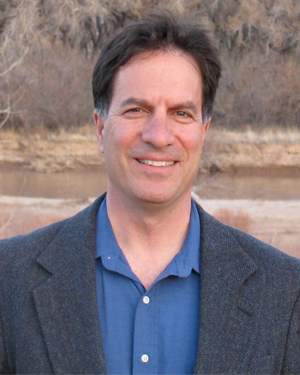November 3, 2017 - Energy Academic Group
Testing Aspects of Superdielectric Behavior
November 3, 2017
ME Lecture Hall
1300
Dr. Jonathan Phillips
Research Professor, Energy Academic Group, Naval Postgraduate School
Abstract
To further test a theory of the recently discovered phenomenon of superdielectric behavior, the dielectric constants of several classes of superdielectric materials (SDM) were tested including ‘pastes’ composed of refractory oxide powders filled to the point of incipient wetness with water containing dissolved sodium chloride and other salts, anodized titania with an array of hollow tubes, also filled with salt solutions, nylon fabric filled with salt solutions and even simple, thin membranes filled with salt solution. Dielectric constants as high as 1011, approximately six orders of magnitude higher than any previously reported, were measured. Energy densities as high as 400 J/cm3 and power densities as high as 100 J/s*cm3 were measured. Moreover, dielectric constants, energy and power density as a function of discharge time was determined. Extrapolation of the measured values to match the reported energy densities of batteries during slow discharge indicates capacitors employing SDM, so-called Novel Paradigm Supercapacitors (NPS), rival the energy density of lithium ion batteries. The implication is that capacitors, cheaper, more durable and far faster to recharge, may someday replace batteries in every application. It is notable that all results are consistent with this recently postulated model of superdielectric behavior in porous, non-conductive materials saturated with ion-containing liquids. Upon the application of an electric field ions dissolved in the saturating liquid contained in the pores will travel to the ends of pore filling liquid droplets creating giant dipoles. The fields of these giant dipoles oppose the applied field, reducing the net field created per unit of charge on the capacitor plates, effectively increasing charge/voltage ratio, hence capacitance. Other observations reported herein include; i) the impact of ion identity/concentration on dielectric values, ii) a maximum voltage similar to that associated with the electrical breakdown of water, iii) the behavior of controls, and iv) the potential value of non-aqueous electrolytes.
Biography
After completing his Post-Doctoral Fellow in 1982 at Technion in Haifa, Israel Dr. Phillips began his academic career as an Associate Professor of Chemical Engineering at Penn State University. During the course of the next 16 years he advanced to full Professor while making an impact on the university. Advisor to ten successful PhD candidates and seventeen successful MS candidates his group focused on materials of interest to chemical engineers, including catalysts, carbons, coal, metals. The group made contributions to the understanding of catalytic etching, bimetallic catalyst particle structure, unique catalytic chemistry of bimetallic catalysts, coal catalysis/gasification, adsorption kinetics, carbon surface chemistry, hydrogen spillover, lithium ‘combustion’, plasma interactions with materials, modification of aerosol particle structure and chemistry in plasmas, transport in plasmas, even the chemistry and structure of lubricants. The group contributed to the development of some analytical techniques including microcalorimetry, high temperature calorimetry, and Mossbauer spectroscopy. His invention of the Aerosol-Through-Plasma (A-T-P) method to make catalysts combined with his patent of a means of creating supported metal catalysts using the A-T-P method revolutionized the catalyst industry. He was awarded support for two sabbaticals abroad during this period, one year as a staff scientist in Poste Rouge Lyon, France (1990-91) and the other a Fulbright Fellowship t at Ben Gurion University in Beersheva, Israel (1997-98).
Upon returning to the States, and for the next 12 years Dr. Phillips served as a staff scientist at Los Alamos National Lab (LANL), and as a National Lab Professor at the University of New Mexico. During that time he was the advisor to nine postdoctoral fellows. A major focus of the work was plasma/materials interactions. Several accomplishments include patents for making a variety of structures using plasmas including carbon nanotubes, nanometal and nanooxide particles and ‘engineered’ multi-layer nanoparticles for use in batteries. Another was developing a mechanistic model of the growth of carbon structures in combustion environments.
In April 2011 Dr. Phillips accepted the position of Research Professor at the Naval Post-Graduate School (NPS). Here, Dr. Phillips taught courses in thermodynamics, and directed the thesis work of over four Master’s students. His chief research interest is developing uses for reduction-expansion synthesis. The work has led to publications/patents for making sub-micron metal particles from metal nitrates, metal oxides and metal hydroxides, and graphene. Dr. Phillips is pursuing the development of unique high dielectric constant material at NPS.
Dr. Phillips earned BA in Physics from Middlbury College, and an MA and PhD in Materials Science from the University of Wisconsin. He has published more than 130 widely cited and reviewed journal articles. He holds nineteen issued patents, seven now licensed, most of which involve novel materials or processes for making materials using the A-T-P. He has more than twenty pending patents.
POC
Dr. Daniel A. Nussbaum
Naval Postgraduate School
Principal, Energy Academic Group
Monterey CA 93943
Phone: 831-656-2387
Mobile: 831-324-3228
Email: dnussbaum@nps.edu


